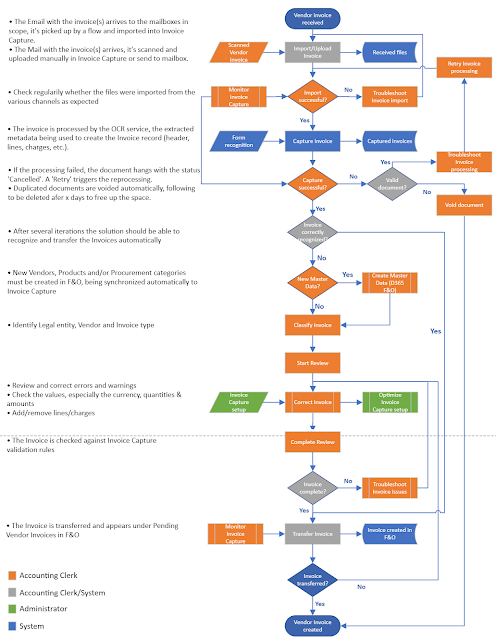 |
| Business Intelligence Series |
An organization's business processes are probably one of its most important assets because they reflect the business model, philosophy and culture, respectively link the material, financial, decisional, informational and communicational flows across the whole organization with implication in efficiency, productivity, consistency, quality, adaptability, agility, control or governance. A common practice in organizations is to document the business-critical processes and manage them accordingly over their lifetime, making sure that the employees understand and respect them, respectively improve them continuously.
In what concerns the creation of data artifacts, data without the processual context are often meaningless, no matter how much a data professional knows about data structures/models. Processes allow to delimit the flow and boundaries of data, respectively delimit the essential from non-essential. Moreover, it's the knowledge of processes that allows to reengineer the logic behind systems especially when no proper documentation about the logic is available.
Therefore, the existence of documented processes allows to bridge the knowledge gaps existing on the factual side, and occasionally also on the technical side. In theory, the processes should provide a complete overview of the procedures, rules, policies and responsibilities existing in the organization, respectively how the business operates. However, even if people tend to understand how the world works locally, when broken down into parts, their understanding is systemically flawed, missing the implications of causal relationships that span time with delays, feedback, variable confusion, chaotic behavior, and/or other characteristics borrowed from the vocabulary of complex systems.
Jay W Forrester [3], Peter M Senge [1], John D Sterman [2] and several other systems-thinking theoreticians stressed the importance of mental models in making-sense about the world especially in setups that reflect the characteristics of complex systems. Mental models frame our experience about the world in congruent mental constructs that are further used to think, understand and navigate the world. They are however tacit, fuzzy, incomplete, imprecisely stated, inaccurate, evolving simplifications with dual character, enabling on one side, while impeding on the other side cognitive processes like sense-making, learning, thinking or decision-making, limiting the range of action to what is familiar and comfortable.
On one side one of the primary goals of Data Analytics is to provide new insights, while on the other side the new insights fail to be recognized and put into practice because they conflict with existing mental models, limiting employees to familiar ways of thinking and acting.
Externalizing and sharing mental models allow besides making assumptions explicit and creating a world view also to strategize, make tests and simulations, respectively make sure that the barriers and further constraints don't impact the decisional process. Sange goes further and advances that mental models, especially at management level, offer a competitive advantage, allowing to maintain coherence and direction, people becoming more perceptive and responsive about environmental or circumstance changes.
The whole process isn't about creating a unique congruent mental model, even if several mental models may converge toward one or more holistic models, but of providing different diverse perspectives and enabling people to make leaps in abstraction (by moving from direct observations to generalizations) while blending advocacy and inquiry to promote collaborative learning. Gradually, people and organizations should recognize a shift from mental models dominated by events to mental models that recognize longer-tern patterns of change and the underlying structures producing those patterns [1].
Probably, for many the concept of mental models seems to be still too abstract, respectively that the effort associated with it is unnecessary, or at least questionable on whether it can make a difference. Conversely, being aware of the positive and negative implications the mental models hold, can makes us explore, even if ad-hoc, the roads they open.
Previous Post <<||>> Next Post
Resources:
[1] Peter M Senge (1990) The Fifth Discipline: The Art & Practice of The Learning Organization
[2] John D Sterman (2000) "Business Dynamics: Systems thinking and modeling for a complex world"
[3] Jay W Forrester (1971) "Counterintuitive Behaviour of Social Systems", Technology Review



